This article will take you through open ended vs closed ended questions.
You are conducting a research to understand your target audience and their perceptions about various products or brands. You want to know what they think, what they like and dislike, and why they feel that way.
But how do you go about it?
Unstructured interviews, open-ended questions, or closed-ended questions?
Each of these research techniques has its own advantages for the researcher. In this article you will learn open ended vs closed ended questions.
Questionnaire
A questionnaire may consist of both closed-ended or open-ended questions, which may be presented in a variety of ways. In surveys, information is collected from respondents using either closed-ended or open-ended question types.
A questionnaire may use either closed-ended or open-ended questions to gather information from respondents. Questionnaires often include a healthy dose of both.
To get the most out of your research and analyze the results efficiently, it is important to choose the right question format from the beginning.
Open-ended questions have advantages in qualitative research because they encourage participants to express themselves freely and offer more insight than closed-ended ones do. Here’s an overview of both types of questions along with examples.
Open-ended questions
Open-ended questions are questions that cannot be answered with a simple “yes” or “no”. They require the interviewee to elaborate on their answers or respond with their own opinion.
The advantage of this kind of question is that it allows for a great deal of flexibility and exploration.
An example of an open-ended question would be
“How do you feel about brand X?” rather than “Do you like brand X?” While the latter is a closed-ended question, the former allows the interviewee to reply in their own words and use their own experiences to answer the question.
This means that the answers you receive will be more authentic and genuine, and therefore more useful to your research.
Conducting research with open-ended questions
Conducting research with open-ended questions is a great way to explore and gain insight into a topic.
In order to analyze the responses of your participants, you will need to follow-up with them with more specific questions. This will allow you to interpret the answers more easily and draw conclusions from the data.
A great example of when open-ended questions are useful is in exploratory research, such as when you want to learn about a certain topic or product.
Another great example of when open-ended questions are useful is when you want participants to define their own ideas or experiences. This is often used in brand research, when you want to know what your audience thinks about your product or brand.
Open-ended questions are also helpful when you want participants to discuss the reasons behind their opinions or experiences.
Closed-ended questions
A closed-ended question is one that can be answered with a simple “yes” or “no”. It gives respondents specific options to choose from and is often used to measure attitudes or opinions.
The advantage of this kind of question is that it makes it easier for researchers to analyze data and draw conclusions.
An example of a closed-ended question would be “Do you like brand X?” rather than “How do you feel about brand X?” While the latter is an open-ended question, the former provides a limited number of options for the research participant to choose from.
This means that the researcher can interpret the results more easily and that they are more likely to be representative of the wider audience.
Conducting research with closed-ended questions
Conducting research with closed-ended questions is a great way to measure attitudes or opinions. You can use these to get a general idea of your participants’ feelings on a certain topic, as well as to measure the strength of their feelings towards it.
A great example of when this is useful is in the pre-testing phase of research when you want to check whether your survey questions have the desired effect and elicit the responses you want.
Closed-ended questions are also helpful when you want to use your research findings to create marketing strategies or campaigns.
For example, if you want to create an ad for a new product, you can use closed-ended questions to find out your audience’s perceptions about the product. You can then use this information to create an effective ad that resonates with your audience.
Closed-ended vs Open-ended questions
What are the differences between closed-ended and open-ended survey questions?
| Open-ended Questions | Closed-ended Questions |
| Questions that should be answered, with long responses. | Questions that should be answered with short responses. |
| Answers are often descriptive, and explanatory. | Answers are short, and factual. |
| The purpose of open ended questions, is qualitative data collection. | The purpose of closed-ended questions, is quantitative data collection. |
| Common types of open ended questions, include essay questions. These are questions that typically require the respondent, to provide more than a single-word answer. | Common types of closed ended questions, include multiple choice questions. The multiple choice questions provide respondents with multiple answer options, that can be structured as checkboxes. |
| Questions begin with words like how, why, explain, and describe. | Questions begin with words like is, would, do, what. |
| Observation, interviews, and focus groups are common data collection methods | Questions, are asked via quantitative data collection methods, like surveys, and questionnaires. |
| It takes a longer period for respondents, to provide answers, to open-ended questions. This is because open-ended questions, require the respondents, to provide detailed accounts of their thoughts, expectations, and experiences as it is relevant to the research context. | On the other hand, closed-ended questions, can be completed in a shorter time frame, because they are brief, and straight to the point. |
| Data collected, via open ended questions, are usually reported as an individual, or grouped verbal responses. | Data provided from responses to closed ended questions, are typically reported as statistical information. |
A closed-ended question offers a limited number of answer choices, such as a single- or multiple-choice question, a matrix, or a scaling question.
An open-ended question allows respondents to type any number of words into the response field. They may consist of a single word or a brief answer, in addition to other things. They are used to provide extra text for answers that don’t fit the given options in closed-ended questions.
Closed-end questions are usually used to answer “what” questions, whereas open-end questions are used to answer “why” questions.
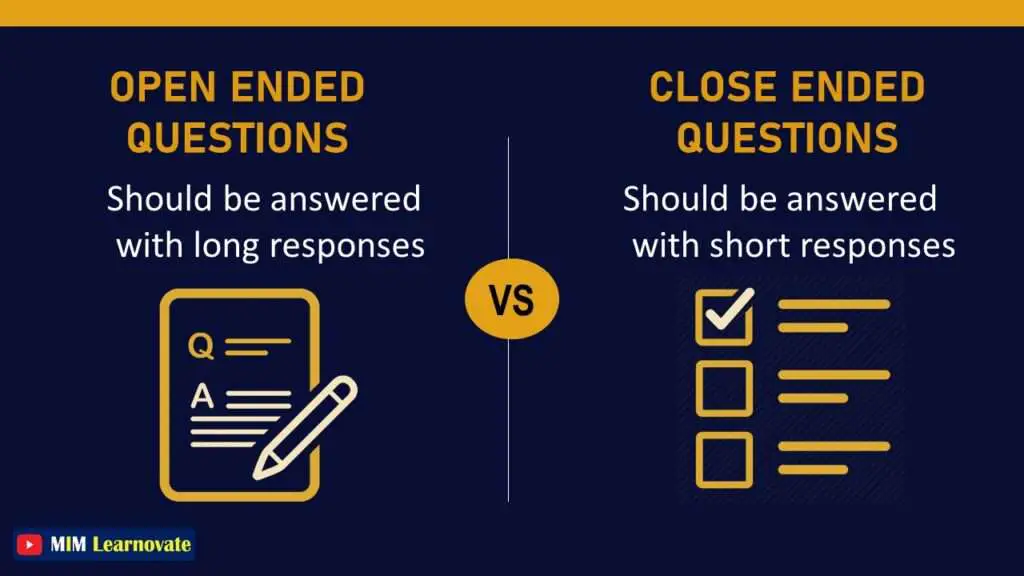
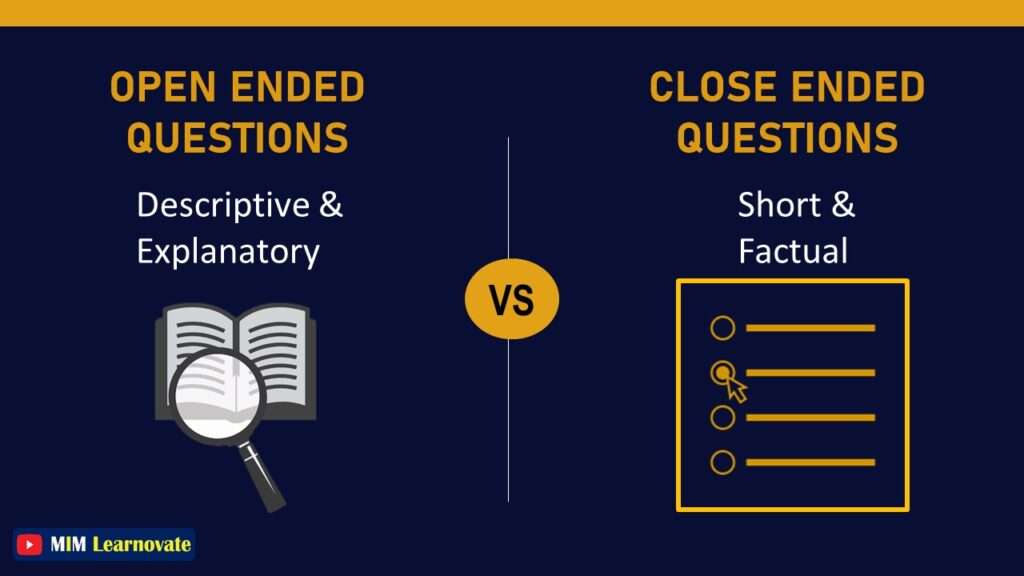
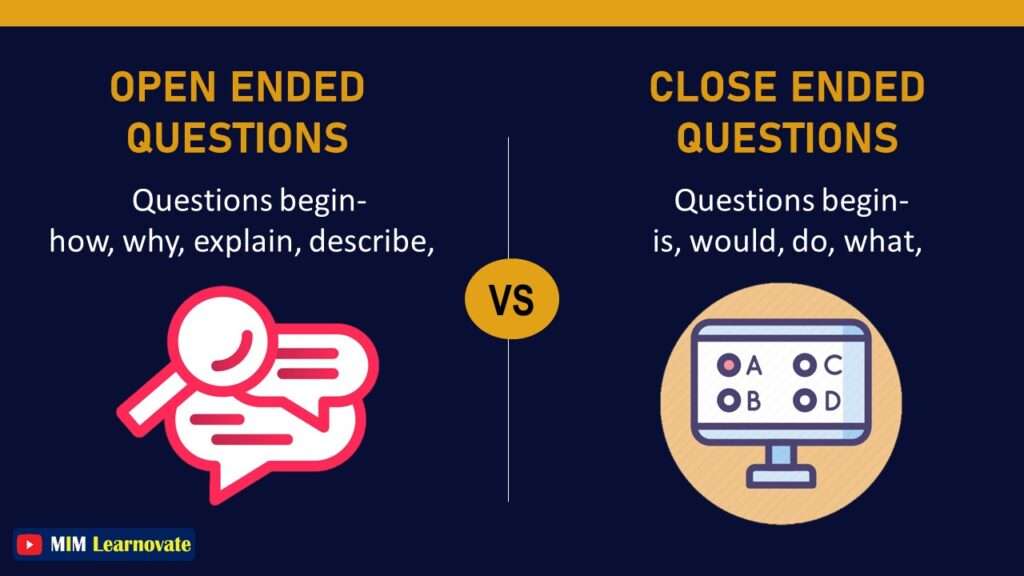
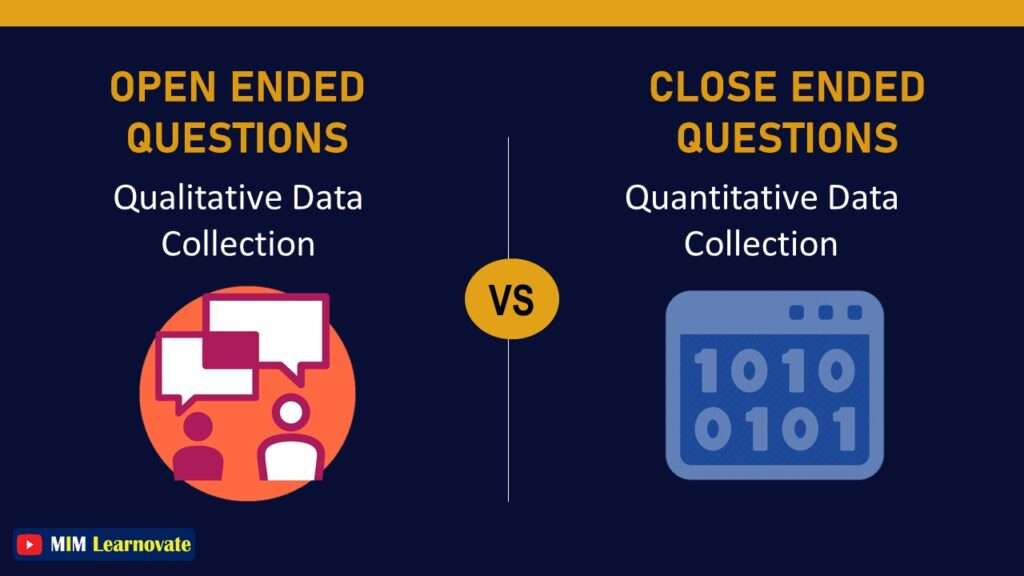

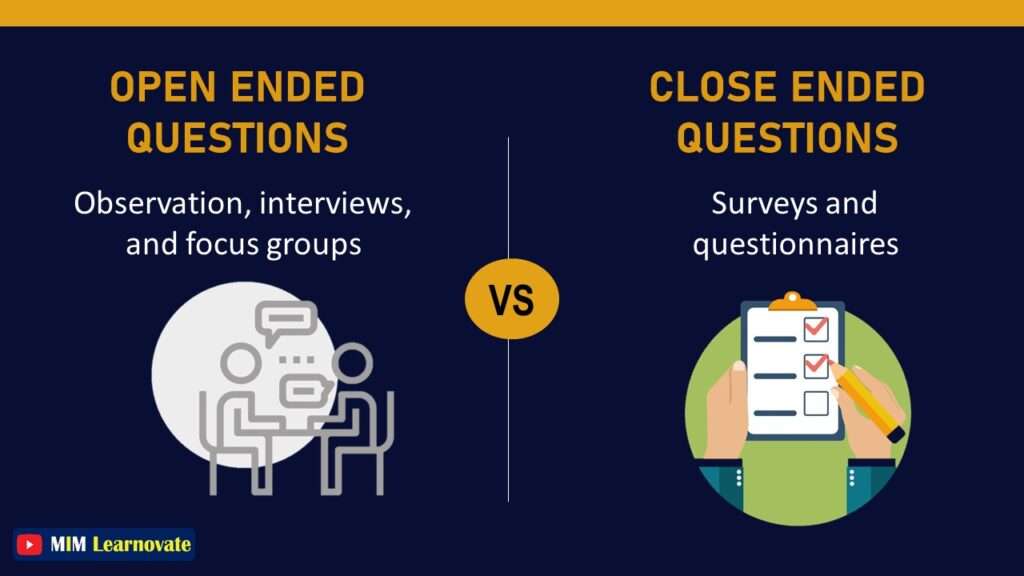
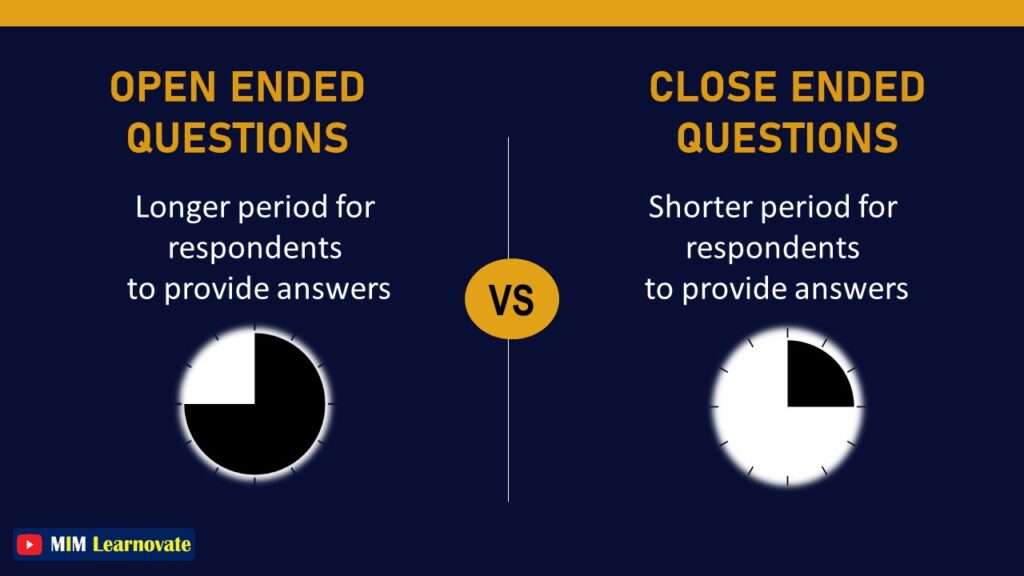
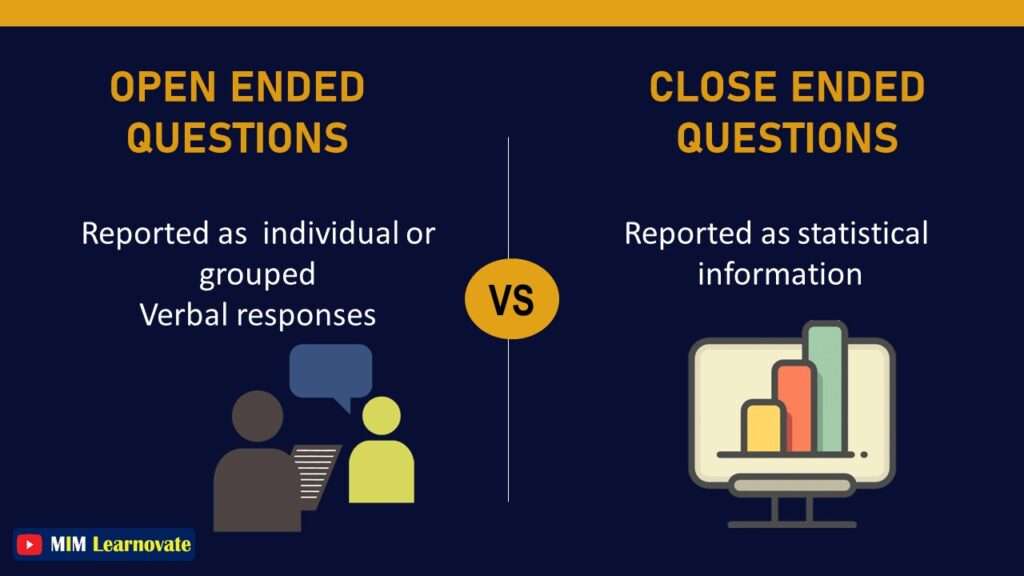
When to use closed-ended survey questions ?
A survey is a great way to collect quantifiable data, provided that the answers can be easily segmented once the survey is finished.
Quantitative research can be used to expand on primary research findings by establishing benchmarks or proving hypotheses.
Surveys that use drop-down menus, radio buttons, or sliding scales often employ closed-ended questions.
These question types usually result in high response rates in digital environments and collect large quantities of data rapidly due to their limited responses and format.
Example:
Likert scales, rating scales, matrix questions, NPS scores, and other types of closed-ended questions are all examples of questions you might see on a digital questionnaire. Because they’re so easy to format, nearly all questions are closed-ended on digital questionnaires.
These types of questions are often used in exploratory research such as broad market research, product-market fit determination, or price testing. A survey about brand awareness may be used by advertisers and brands to measure brand lift in a specific demographic or geographic area or to determine the effectiveness of a campaign, for example.
When to use open-ended survey questions ?
Open-ended questions are used to collect qualitative data such as feelings, attitudes, or other more abstract information. While not as easy to analyze as closed-ended questions, they provide additional context that quantitative data cannot.
In secondary and qualitative research, these survey questions are used to investigate subjects in greater depth. They may appear on survey questionnaires as well as in interviews and focus groups as a method for collecting data in a more conversational style.
It is important to include both types of questions throughout the research in order to gain a thorough understanding of the topic.
Quantitative research projects often use closed-end questions for primary or broad research. These questions provide a closed data set, making it easier to segment and analyze answers than open-ended questions.
Researchers often use open-ended questions to gain further insights into respondents’ thinking, after first asking closed-ended questions to verify that they are on the right track.
Example
Open-ended questions are often used in focus groups with existing customers or user experience feedback to create a more conversational experience. They may also be used in conjunction with a closed-ended survey question on a questionnaire to provide additional context.
Drafting closed-ended questions
1. Avoid using complicated, wordy questions. Use simple, clear language in order to get quick answers.
2. Ensure that scales are ordered logically. Likert scales should be arranged in the proper order.
3. Mix up answers if they are unordered. For example, if there is no sequence, the answer choices should be mixed up.
4. Consider external factors. Take into account the environment in which respondents take the survey, especially in the case of mobile surveys, which should be quick and simple to complete on-the-go for the best respondent experience.
5. Let respondents choose ‘other,’ ‘no opinion,’ or use skip logic to eliminate respondents who are not a good fit for a certain question.
Drafting open-ended questions
1. It’s crucial to keep your questions neutral and allow respondents to answer using their own words.
2. It’s also important to use open-ended questions sparingly on mobile devices, as respondents may not have many distractions and may want to take their time.
3. It is best to avoid leading questions and let respondents answer using their own words in mobile surveys.
4. When open-ended questions are used, the respondent should always be allowed to offer more information.
5. When your question asks why, it allows respondents to explain their thinking behind their previous answer and provides additional context you may not have considered.
Which is better?
At the end of the day, it is the researcher’s job to decide which questions to use, based on the knowledge that only open-ended questions can provide.
However, there are certain types of research where open-ended questions are more useful than others. Depending on your research objectives, you may find that open-ended questions are more appropriate. If you’re conducting a survey to get a general idea of your participants’ feelings on a certain topic, as well as to measure the strength of their feelings towards it, closed-ended questions are your best choice.
On the other hand, if you want to explore and gain insight into a topic, or if you want to know your audience’s perceptions about your product or brand, open-ended questions are the best option.
Other articles
Please read through some of our other articles with examples and explanations if you’d like to learn more about research methodology.
Comparision
- Basic and Applied Research
- Cross-Sectional vs Longitudinal Studies
- Survey vs Questionnaire
- Open Ended vs Closed Ended Questions
- Experimental and Non-Experimental Research
- Inductive vs Deductive Approach
- Null and Alternative Hypothesis
- Reliability vs Validity
- Population vs Sample
- Conceptual Framework and Theoretical Framework
- Bibliography and Reference
- Stratified vs Cluster Sampling
- Sampling Error vs Sampling Bias
- Internal Validity vs External Validity
- Full-Scale, Laboratory-Scale and Pilot-Scale Studies
- Plagiarism and Paraphrasing
- Research Methodology Vs. Research Method
- Mediator and Moderator
Comparision
- Independent vs. Dependent Variable – MIM Learnovate
- Research Article and Research Paper
- Proposition and Hypothesis
- Principal Component Analysis and Partial Least Squares
- Academic Research vs Industry Research
- Clinical Research vs Lab Research
- Research Lab and Hospital Lab
- Thesis Statement and Research Question
- Quantitative Researchers vs. Quantitative Traders
- Premise, Hypothesis and Supposition
- Survey Vs Experiment
- Hypothesis and Theory
- Independent vs. Dependent Variable
- APA vs. MLA
- Ghost Authorship vs. Gift Authorship
Research
- Research Methods
- Quantitative Research
- Qualitative Research
- Case Study Research
- Survey Research
- Conclusive Research
- Descriptive Research
- Cross-Sectional Research
- Theoretical Framework
- Conceptual Framework
- Triangulation
- Grounded Theory
- Quasi-Experimental Design
- Mixed Method
- Correlational Research
- Randomized Controlled Trial
- Stratified Sampling
- Ethnography
- Ghost Authorship
- Secondary Data Collection
- Primary Data Collection
- Ex-Post-Facto
Research
- Table of Contents
- Dissertation Topic
- Synopsis
- Thesis Statement
- Research Proposal
- Research Questions
- Research Problem
- Research Gap
- Types of Research Gaps
- Variables
- Operationalization of Variables
- Literature Review
- Research Hypothesis
- Questionnaire
- Abstract
- Validity
- Reliability
- Measurement of Scale
- Sampling Techniques
- Acknowledgements
Statistics



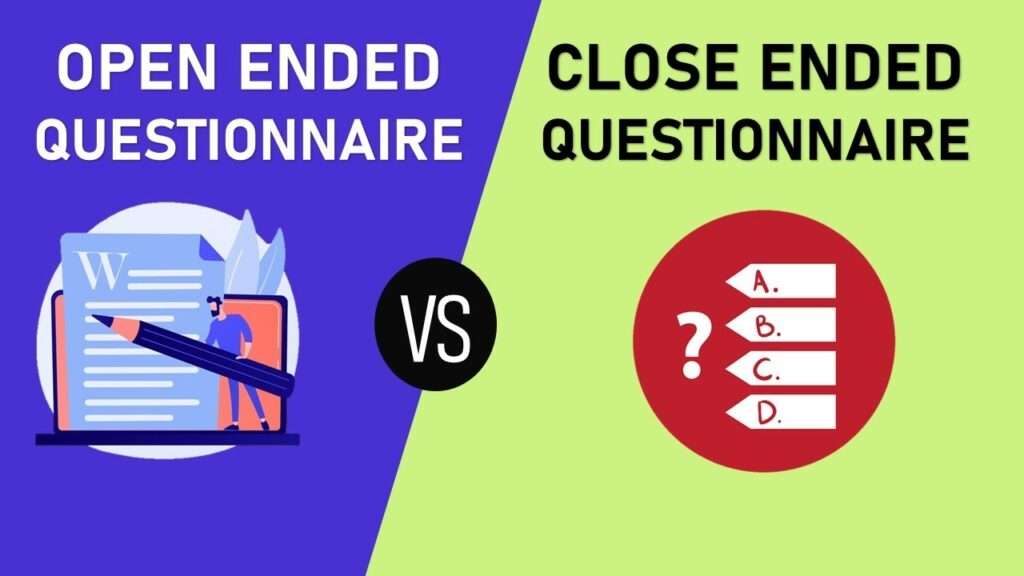
5 Comments
A formidable share, I just given this onto a colleague who was doing a bit of evaluation on this. And he actually purchased me breakfast as a result of I discovered it for him.. smile. So let me reword that: Thnx for the deal with! However yeah Thnkx for spending the time to discuss this, I feel strongly about it and love studying extra on this topic. If possible, as you grow to be experience, would you mind updating your blog with extra particulars? It is highly helpful for me. Large thumb up for this blog submit!
I’ve been absent for a while, but now I remember why I used to love this web site. Thank you, I will try and check back more often. How frequently you update your website?
I must convey my love for your generosity in support of those who really want guidance on this important question. Your real commitment to passing the message all-around was particularly valuable and have encouraged regular people like me to attain their desired goals. Your entire interesting suggestions can mean much to me and a whole lot more to my office workers. Thanks a lot; from all of us.
You got a very superb website, Sword lily I found it through yahoo.
I found your weblog web site on google and verify a number of of your early posts. Proceed to keep up the excellent operate. I simply further up your RSS feed to my MSN Information Reader. Seeking forward to reading extra from you afterward!…